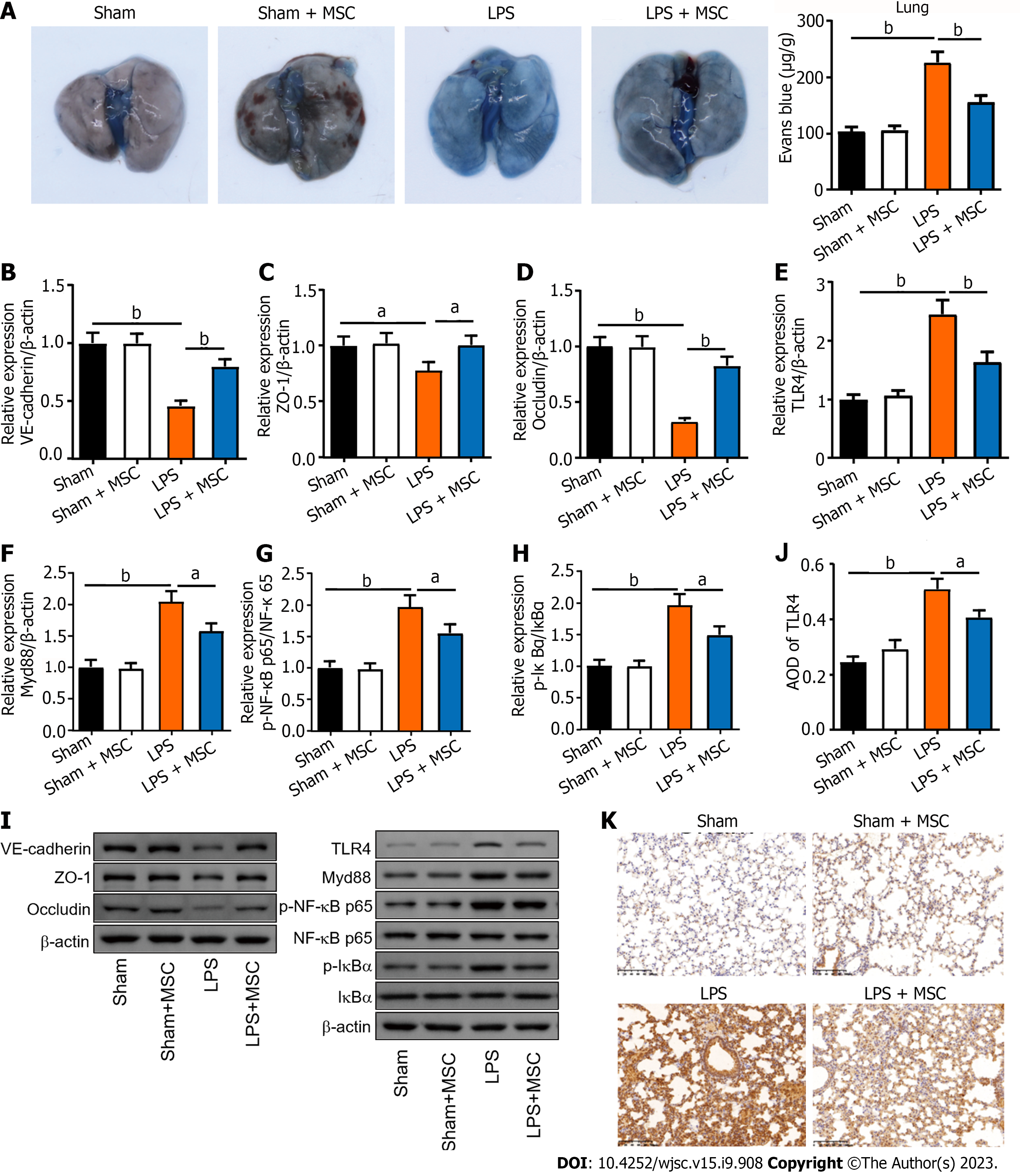Copyright
©The Author(s) 2023.
World J Stem Cells. Sep 26, 2023; 15(9): 908-930
Published online Sep 26, 2023. doi: 10.4252/wjsc.v15.i9.908
Published online Sep 26, 2023. doi: 10.4252/wjsc.v15.i9.908
Figure 2 Human umbilical cord mesenchymal stem cells improve endothelial barrier function in vivo and regulate related protein expression.
A: The Evans blue assay was carried out to assess lung endothelial barrier function in acute lung injury (ALI) mice (n = 3). The ALI mice [lipopolysaccharide (LPS) group] had the largest amount of Evans blue contents; human umbilical cord mesenchymal stem cell (HUC-MSC) treatment in ALI mice (LPS + MSC group) decreased the contents in the lung; B-H: LPS treatment in mice inhibited the expression of vascular endothelial-cadherin (B), zonula occludens-1 (C), and occludin (D) and raised the expression of Toll-like receptor 4 (TLR4) (E), myeloid differentiation factor 88 (F), p-nuclear factor kappa-B (NF-κB)/NF-κB (G), and p-inhibitor α of NF-κB (IκBα)/IκBα (H) (n = 3), while HUC-MSC treatment antagonized the effects of LPS; I: Representative western blot bands of the above proteins; J and K: Statistical results of immunohistochemistry and its representative images. It was showed that TLR4 was highly expressed in the lung tissue of ALI mice and HUC-MSC treatment could decrease its expression (n = 3). aP < 0.05, bP < 0.01. LPS: Lipopolysaccharide; MSC: Mesenchymal stem cell; LPS: Lipopolysaccharide; VE: Vascular endothelial; ZO-1: Zonula occludens-1; TLR4: Toll-like receptor 4; Myd88: Myeloid differentiation factor 88; NF-κB: Nuclear factor kappa-B; IκBα: Inhibitor α of nuclear factor kappa-B.
- Citation: Lv L, Cui EH, Wang B, Li LQ, Hua F, Lu HD, Chen N, Chen WY. Multiomics reveal human umbilical cord mesenchymal stem cells improving acute lung injury via the lung-gut axis. World J Stem Cells 2023; 15(9): 908-930
- URL: https://www.wjgnet.com/1948-0210/full/v15/i9/908.htm
- DOI: https://dx.doi.org/10.4252/wjsc.v15.i9.908









